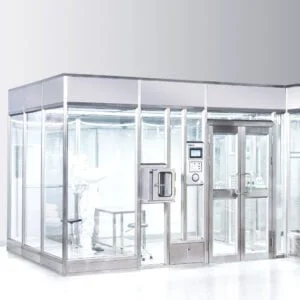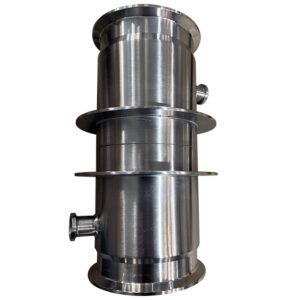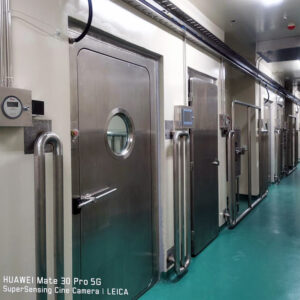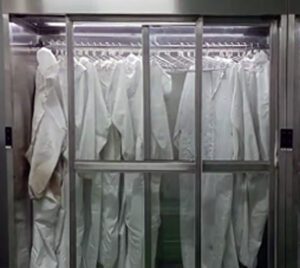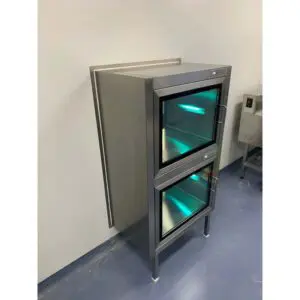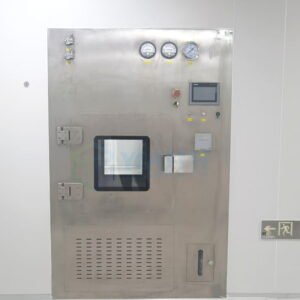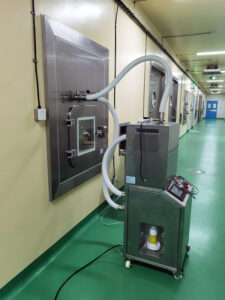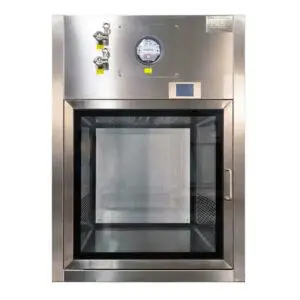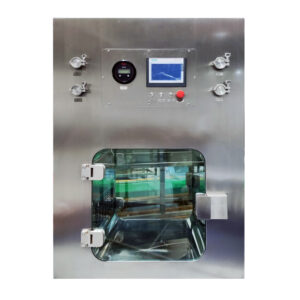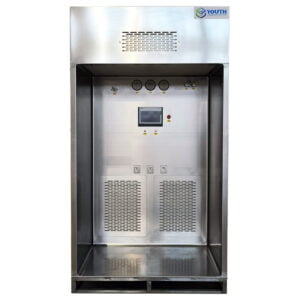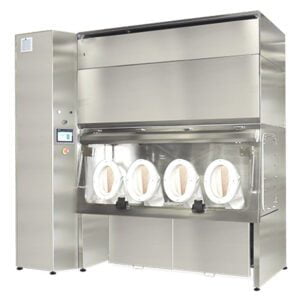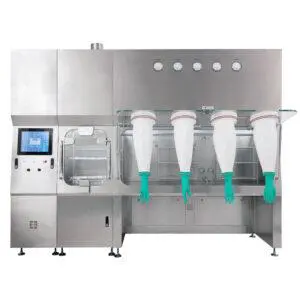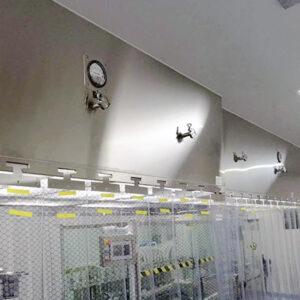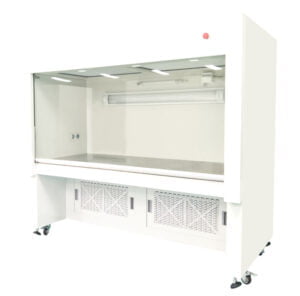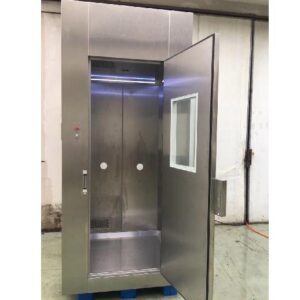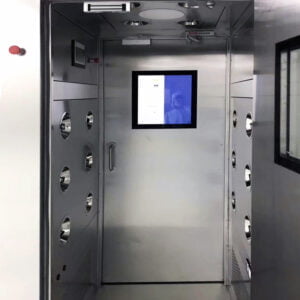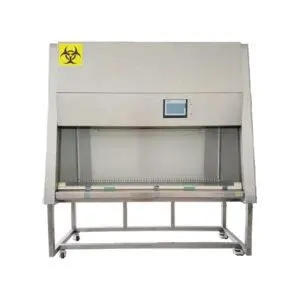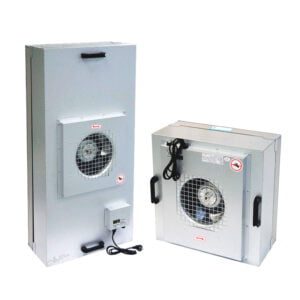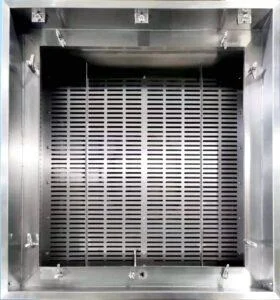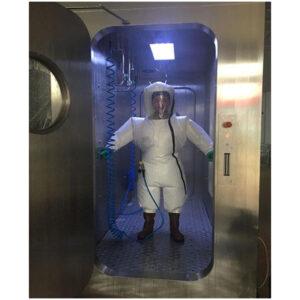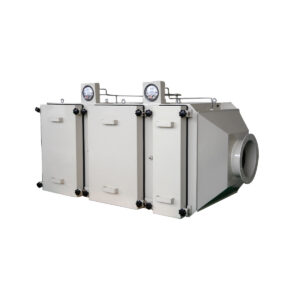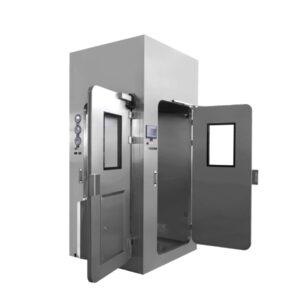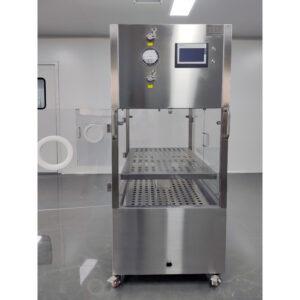Biosafety cabinets are critical components in laboratories, ensuring the safety of personnel and the integrity of experiments. Proper maintenance of these essential pieces of equipment is paramount to their effective operation and longevity. In this comprehensive guide, we'll explore the best practices for biosafety cabinet maintenance, providing you with the knowledge and tools necessary to keep your lab running smoothly and safely.
As we delve into the world of biosafety cabinet maintenance, we'll cover everything from daily cleaning routines to annual certification requirements. We'll explore the importance of regular filter checks, proper airflow management, and the role of professional servicing. By following these best practices, you'll not only extend the life of your biosafety cabinet but also ensure the highest standards of safety and efficiency in your laboratory.
Let's begin our journey into the intricacies of biosafety cabinet maintenance, starting with the fundamental aspects and progressing to more advanced techniques. Whether you're a seasoned lab manager or a new technician, this guide will provide valuable insights to help you maintain your biosafety cabinet at peak performance.
Regular maintenance of biosafety cabinets is essential for ensuring the safety of laboratory personnel and the integrity of research materials. Proper care and upkeep can significantly extend the lifespan of these critical pieces of equipment, ultimately saving time and resources in the long run.
What are the essential daily maintenance tasks for biosafety cabinets?
Daily maintenance is the cornerstone of effective biosafety cabinet care. These routine tasks, performed consistently, can prevent many issues before they arise and ensure your cabinet is always ready for use.
The daily maintenance routine typically includes wiping down all interior surfaces, checking the airflow indicator, and ensuring the sash is at the correct height. These simple yet crucial steps help maintain a sterile environment and optimal performance.
Delving deeper, it's important to understand that daily maintenance isn't just about cleanliness. It's also about observing and documenting any changes in the cabinet's performance. For instance, unusual noises, fluctuations in airflow, or changes in the ease of sash movement should all be noted and reported promptly.
Daily maintenance tasks are critical for maintaining the sterility and functionality of biosafety cabinets. Neglecting these tasks can lead to contamination, reduced efficiency, and potential safety hazards.
| Daily Maintenance Task | Frequency | Importance |
|---|---|---|
| Surface disinfection | After each use | Critical |
| Airflow check | Before each use | High |
| Sash position check | Before and after use | High |
| Visual inspection | Daily | Medium |
In conclusion, daily maintenance is not just a task to be checked off a list; it's a crucial part of laboratory safety culture. By integrating these practices into your daily routine, you ensure that your biosafety cabinet remains a reliable shield against contamination and exposure.
How often should HEPA filters be checked and replaced?
HEPA (High-Efficiency Particulate Air) filters are the heart of a biosafety cabinet's containment system. Regular checks and timely replacements are crucial for maintaining the cabinet's effectiveness and safety.
Typically, HEPA filters should be checked at least annually during the cabinet's certification process. However, more frequent checks may be necessary depending on usage and environmental factors. Replacement is generally recommended every 3-5 years, but this can vary based on the cabinet's use and performance.
It's important to note that filter checks aren't just about scheduling. They involve a thorough examination of the filter's integrity and performance. This includes leak tests, airflow measurements, and sometimes even particle counting to ensure the filter is operating at peak efficiency.
Regular HEPA filter checks and timely replacements are crucial for maintaining the integrity of a biosafety cabinet. Neglecting filter maintenance can compromise the cabinet's ability to provide a safe working environment and may lead to costly contamination incidents.
| Filter Check Aspect | Frequency | Method |
|---|---|---|
| Visual inspection | Monthly | Manual |
| Airflow measurement | Annually | Professional |
| Leak test | Annually | Professional |
| Particle count | As needed | Professional |
In conclusion, while HEPA filter maintenance might seem like a background task, it's actually at the forefront of biosafety cabinet performance. Regular checks and timely replacements ensure that your cabinet continues to provide the high level of protection it was designed for, safeguarding both your work and your health.
What role does professional servicing play in biosafety cabinet maintenance?
Professional servicing is a critical component of comprehensive biosafety cabinet maintenance. While daily and routine maintenance can be performed by lab personnel, certain tasks require the expertise of trained professionals.
Professional servicing typically includes annual certification, which involves a series of tests to ensure the cabinet meets safety standards. This may include airflow velocity tests, HEPA filter integrity tests, and checks on the cabinet's electrical and mechanical components.
Beyond certification, professional technicians can perform more in-depth maintenance tasks. This might include replacing worn parts, recalibrating sensors, or addressing complex issues that arise during regular use. Their expertise can be invaluable in diagnosing and resolving problems that might not be apparent to the average user.
Professional servicing is essential for ensuring the long-term reliability and safety of biosafety cabinets. Regular professional maintenance can prevent costly breakdowns, extend the life of the cabinet, and ensure compliance with safety regulations.
| Professional Service | Frequency | Benefits |
|---|---|---|
| Annual certification | Yearly | Ensures compliance, validates performance |
| Deep cleaning | As needed | Removes stubborn contaminants, extends life |
| Component replacement | As needed | Maintains optimal performance, prevents breakdowns |
| Recalibration | As needed | Ensures accuracy of sensors and controls |
In conclusion, while daily maintenance is crucial, professional servicing provides a level of care and expertise that is essential for the long-term health of your biosafety cabinet. By investing in regular professional maintenance, you're not just maintaining equipment – you're ensuring the safety and reliability of your entire laboratory operation.
How can proper cleaning techniques enhance biosafety cabinet performance?
Proper cleaning techniques are fundamental to maintaining the performance and safety of biosafety cabinets. Effective cleaning not only ensures a sterile work environment but also contributes to the longevity of the cabinet.
The cleaning process typically involves using appropriate disinfectants, following specific wiping techniques, and paying attention to all surfaces, including hard-to-reach areas. It's crucial to use cleaning agents that are effective against the types of contaminants you work with, without damaging the cabinet's surfaces.
A deeper dive into cleaning techniques reveals the importance of understanding the cabinet's design. For instance, knowing how to properly clean around the air grilles without disturbing the airflow patterns is crucial. Additionally, understanding the compatibility of different cleaning agents with the cabinet's materials can prevent unintended damage.
Proper cleaning techniques are essential for maintaining the sterility and functionality of biosafety cabinets. Incorrect cleaning methods can lead to contamination, damage to the cabinet, and potentially compromise experimental results.
| Cleaning Aspect | Frequency | Recommended Method |
|---|---|---|
| Surface disinfection | After each use | 70% ethanol or appropriate disinfectant |
| Deep cleaning | Weekly | Thorough wipe-down with appropriate cleaners |
| UV light exposure | As needed | Follow manufacturer guidelines |
| Air grille cleaning | Monthly | Gentle vacuuming or wiping |
In conclusion, proper cleaning is more than just a hygiene practice – it's a critical aspect of biosafety cabinet maintenance. By adopting thorough and appropriate cleaning techniques, you ensure that your cabinet remains a reliable tool in your laboratory arsenal, providing consistent protection and performance.
What are the key components of a comprehensive maintenance schedule?
A comprehensive maintenance schedule is the backbone of effective biosafety cabinet care. It ensures that all aspects of maintenance are addressed regularly and systematically, preventing oversights and potential issues.
A well-structured maintenance schedule typically includes daily, weekly, monthly, and annual tasks. This might range from simple daily wipe-downs to more complex annual certifications. The schedule should also account for unexpected maintenance needs and provide guidelines for addressing them.
Diving deeper, it's important to understand that an effective maintenance schedule is not a one-size-fits-all solution. It should be tailored to your specific cabinet model, usage patterns, and the types of materials you work with. This customization ensures that your maintenance efforts are both efficient and effective.
A comprehensive maintenance schedule is crucial for ensuring the consistent performance and longevity of biosafety cabinets. Neglecting to implement a thorough schedule can lead to overlooked issues, reduced efficiency, and potential safety hazards.
| Maintenance Task | Frequency | Responsibility |
|---|---|---|
| Surface cleaning | Daily | Lab personnel |
| Airflow check | Weekly | Lab personnel |
| Filter inspection | Monthly | Lab personnel |
| Certification | Annually | Professional technician |
In conclusion, a comprehensive maintenance schedule is not just a document – it's a commitment to the safety and efficiency of your laboratory. By implementing and adhering to a well-designed schedule, you ensure that your biosafety cabinet remains a reliable and effective tool in your research endeavors.
How does proper usage contribute to effective maintenance?
Proper usage of biosafety cabinets is intrinsically linked to their maintenance. How a cabinet is used on a daily basis can significantly impact its performance, longevity, and maintenance needs.
Correct usage involves following proper procedures for working within the cabinet, such as maintaining correct arm positions, avoiding rapid movements, and properly managing airflow. It also includes understanding the limitations of the cabinet and not using it for purposes it wasn't designed for.
A deeper look into proper usage reveals its impact on maintenance. For instance, maintaining correct sash height during operation not only ensures proper airflow but also reduces strain on the cabinet's motor, potentially extending its life. Similarly, avoiding the use of YOUTH unapproved materials within the cabinet can prevent damage to filters and other components.
Proper usage is a fundamental aspect of biosafety cabinet maintenance. Incorrect usage can lead to contamination, increased wear and tear, and potentially compromise the safety features of the cabinet.
| Usage Aspect | Impact on Maintenance | Best Practice |
|---|---|---|
| Sash position | Affects motor life and airflow | Maintain at proper height during use |
| Material handling | Impacts filter life | Use appropriate materials and techniques |
| Workspace organization | Affects cleaning efficiency | Keep organized and clutter-free |
| Airflow management | Impacts containment effectiveness | Avoid blocking grilles and vents |
In conclusion, proper usage is not just about following rules – it's about understanding how your actions impact the cabinet's performance and longevity. By adopting correct usage practices, you contribute to the effective maintenance of your biosafety cabinet, ensuring it remains a reliable tool in your laboratory.
What role does documentation play in biosafety cabinet maintenance?
Documentation is a crucial yet often overlooked aspect of biosafety cabinet maintenance. Proper record-keeping provides a clear history of the cabinet's performance, maintenance activities, and any issues encountered.
Effective documentation typically includes logs of daily checks, cleaning activities, repair work, and certification results. These records not only help track the cabinet's condition over time but also prove invaluable during audits or when troubleshooting issues.
Delving deeper, documentation serves multiple purposes beyond mere record-keeping. It can help identify patterns in performance issues, inform maintenance schedules, and even contribute to better budget planning for replacement parts or new equipment.
Thorough documentation is essential for effective biosafety cabinet maintenance. Lack of proper records can lead to overlooked maintenance needs, difficulties in troubleshooting, and potential non-compliance with regulatory requirements.
| Documentation Type | Purpose | Frequency |
|---|---|---|
| Usage log | Track operating hours | Daily |
| Cleaning log | Record disinfection activities | After each use |
| Maintenance log | Document repairs and servicing | As performed |
| Certification records | Prove compliance with standards | Annually |
In conclusion, documentation is more than just paperwork – it's a vital tool in the effective maintenance and management of your biosafety cabinet. By maintaining comprehensive and accurate records, you create a valuable resource that supports the ongoing safety and efficiency of your laboratory operations.
As we conclude our comprehensive guide to Biosafety cabinet maintenance, it's clear that maintaining these critical pieces of equipment is a multifaceted endeavor. From daily cleaning routines to annual professional servicing, each aspect plays a crucial role in ensuring the safety, efficiency, and longevity of your biosafety cabinet.
We've explored the importance of regular HEPA filter checks, the role of professional servicing, and the impact of proper usage on maintenance needs. We've delved into the nuances of cleaning techniques and the critical role of documentation in tracking and improving maintenance efforts. Throughout, we've emphasized the importance of a comprehensive, tailored maintenance schedule that addresses all these aspects systematically.
Remember, effective biosafety cabinet maintenance is not just about preserving equipment – it's about safeguarding the integrity of your research, the health of your personnel, and the compliance of your laboratory with safety standards. By implementing the best practices outlined in this guide, you're not just maintaining a piece of equipment; you're investing in the success and safety of your entire laboratory operation.
As you move forward, consider how you can integrate these practices into your daily routines and long-term planning. Regularly review and update your maintenance procedures, stay informed about the latest developments in biosafety cabinet technology, and always prioritize the safety and efficiency of your laboratory environment. With diligence and attention to detail, your biosafety cabinet will continue to serve as a reliable cornerstone of your research efforts for years to come.
External Resources
Cleaning and Maintenance of the Biosafety cabinet [BSC] – This resource outlines the detailed maintenance tasks for a Biosafety Cabinet, including daily, weekly, and annual maintenance procedures, as well as certification requirements to ensure the cabinet's proper functioning and safety.
A guide to maintenance a Class II Biosafety Cabinet – BIOBASE LLC – This guide provides a comprehensive maintenance schedule for Class II Biosafety Cabinets, including daily, weekly, and annual maintenance tasks, and emphasizes the importance of keeping a record of operating time and performing specific checks on the cabinet's components.
7 Tips for Maintaining Your Biological Safety Cabinet – Allometrics – This article offers seven tips for maintaining a Biological Safety Cabinet, including regular cleaning, proper usage, regular maintenance by qualified technicians, calibration, user training, and continuous monitoring to ensure the cabinet's optimal performance and safety.
Maintain, Move & Transfer a Class II Biological Safety Cabinet (BSC) – VUMC – This resource provides guidelines on maintaining, moving, and transferring Class II Biosafety Cabinets, highlighting the need for annual disassembly and cleaning of the workspaces and ensuring all maintenance is performed by qualified personnel.
Biological Safety and Laminar Flow Cabinet Maintenance Tips and Procedures – This document details preventive maintenance procedures, certification requirements, and cleaning protocols for Biological Safety Cabinets and Laminar Flow Cabinets. It includes specific steps for cleaning various parts of the cabinet and ensuring compliance with safety standards.
Related Contents:
- Class II A2 Biosafety Cabinets: Features & Uses
- HEPA Filters in Biosafety Cabinets: A Deep Dive
- Biosafety Cabinet Airflow: Understanding Patterns
- Biosafety Cabinet Installation: Key Considerations
- Biosafety Cabinet Types: 2025 Guide to Lab Safety
- Laminar Flow Hood vs BSC: Choosing Wisely
- Navigating Biosafety Cabinet Classes: A Complete Overview
- LAF Garment Cabinet Preventive Maintenance Guide
- Biosafety Cabinet Decontamination: Step-by-Step

